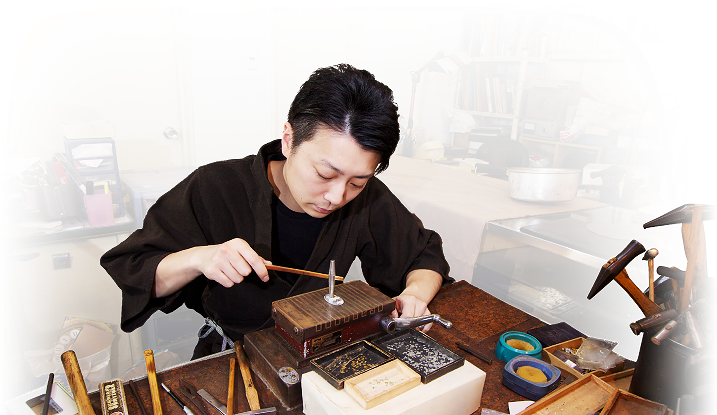Zogan is a beautiful traditional Japanese inlay craft with a number of different forms depending on the material used such as metal, wood, or ceramic. Using a thin metal plate as a base, small differently colored metal pieces are inlayed to create delicate patterns with subtle color differences and an uneven surface. When written in Japanese, “Zo (象)” means “symbolizing” and “Gan (嵌)” is inlaying.
Various techniques of inlay crafts have prevailed widely around the world since ancient times. Metal inlay crafts originate from Damascus in Syria and it is said that the technique traveled along the Silk Road and reached Japan around the Asuka period (592-710). Inlay crafts were initially utilized in weapons or utensils for religious ceremonies. One of the early examples of inlay technique can be found on the ancient samurai sword called Shichisei-ken possessed by Shitennoji Temple in Osaka. Here, inlay decoration is applied on the blade and the end of the handle of this large sword. Another example is at the Shosoin Imperial Repository in Nara where a sword with gold inlay is preserved. At Yakushiji Temple in Nara, symbolically important Buddhist patterns are inlayed on the palms and feet of their main Buddhist statue.
-

Though Zogan flourished in the Asuka period, it gradually fell into decline in the Heian period (794-1185). Just a few fine examples of Zogan from that period have been discovered, such as small inlays applied on the door stoppers of the Ho-o-do Hall of Byodo-in Temple in Uji, Kyoto.
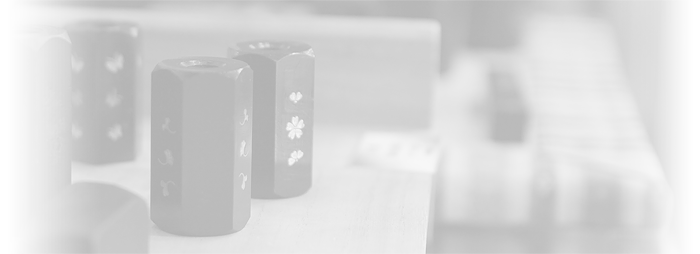
-

Later in the Kamakura period (1185-1333), Zogan was revived for use on round sword guards. Generally, these sword guards were inscribed with the characters for “Yamashiro-sumi山城住” or “Heianjo-sumi 平安城住” as the name of the sword. Later around 1530, Fushimi-sumi Kaneie, the sword guard inlay master, founded his original method of creating decorative designs. His Zogan techniques depicting beautiful sceneries and people were outstandingly delicate and superb employing various metals in different colors such as gold, silver, reddish copper, and common copper.
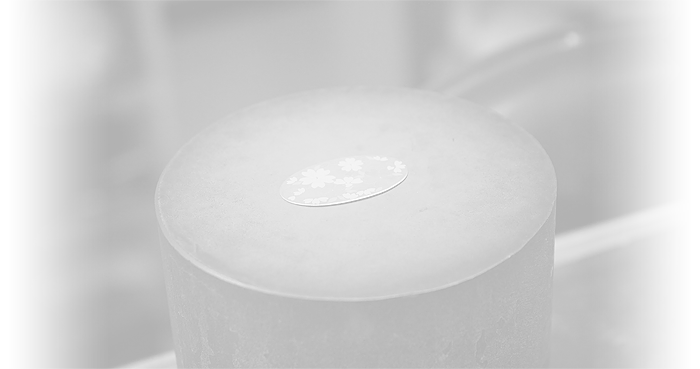
-

In the early Edo period (1603-1868), there were two outstanding Zogan master families in the Nishijin area of Kyoto. One was the Umetada Family and the other, the Shoami Family. The Umetada Family started their business as swordsmiths before employing Zogan. A particularly noteworthy Zogan artist from the Umetada Family was a man named Myoju who served Hideyoshi Toyotomi, one of the most powerful samurai lords who ruled Japan in the late 16th century. Myoju excelled in flat Zogan decorated with fine lines called Rinzu and Sayagata. The Shoami Family started from the master of samurai armor manufacture and their most well-known Zogan master was named Masanori. Disciples of both the Zogan master families spread throughout Japan and worked for regional lords as Zogan craftsmen. In this way, the Kyoto-style Zogan skill prevailed all around Japan.
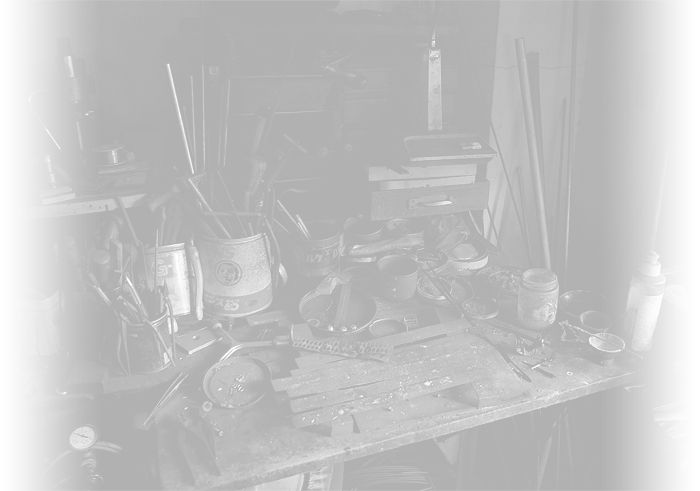
-

Until end of the Edo period, Zogan was mostly used for decorating valuable items, such as swords, only for samurai lords and imperial members. Eventually, however, the Zogan technique began to be used for other items such as charcoal braziers and pipes. When Japan experienced its drastic social restoration in the Meiji period (1868-1912), the government banned the general public from possessing swords in 1876, a law which almost ended the Zogan tradition in Japan. However, some ardent artists, such as Yasunosuke Shikata and Yasuyuki Namikawa, fled overseas and succeeded to continue the tradition of Japanese Zogan. As a result, traditional Japanese inlay works were highly valued in Western countries, and many items were exported due to their sublime beauty.
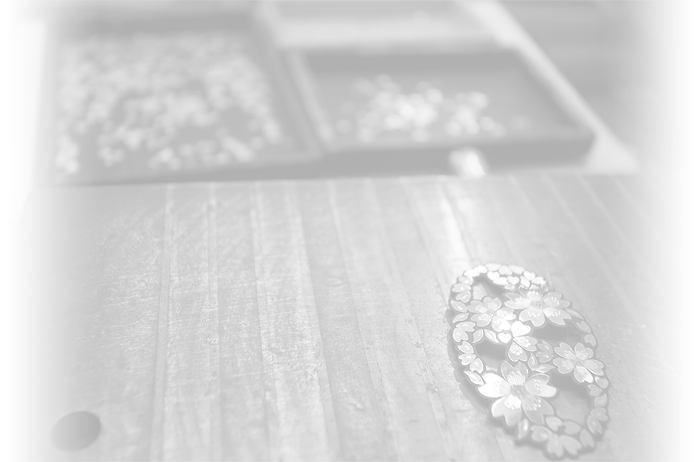
Nakajima Zogan is one of the successors of the tradition of Kyoto-style Zogan. With a deep respect and admiration for the excellent inlay skills of our predecessors, we never cease from pursuing the further development of Zogan.
